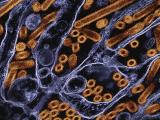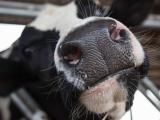Amid uncertainty about the extent of H5N1 avian flu spread in dairy cattle and spillover to people, wastewater testing has emerged as an important tool for surveillance. In new results published yesterday, scientists from WastewaterSCAN detected significant levels of H5 influenza in three treatment plants in communities where H5N1 has been detected in cattle.
In other developments, a dairy specialist from Michigan State University Extension posted a case report on an outbreak at a Michigan dairy farm, which suggests that the symptoms in cows were more profound than previously described and outlines the challenges farmers have in containing the virus.
Testing could provide early signal but has limitations
Scientists from WastewaterSCAN, a national wastewater monitoring system based at Stanford University in partnership with Emory University, published their findings yesterday in Environmental Science and Technology Letters.
The group's findings come amid other efforts to track the spread of the virus through wastewater. The Centers for Disease Control and Prevention (CDC) last week launched its own wastewater surveillance dashboard, which tracks influenza A, including H5N1. Also, researchers from Texas recently found H5N1 virus sequences in wastewater 9 of 10 Texas cities they sampled.
Using an H5 probe they developed, the WastewaterSCAN team found significant H5 and influenza A levels in retrospective wastewater solids samples from four wastewater treatment plants in communities near H5N1 outbreaks in dairy cattle, three in Texas (two in Amarillo and one in Dallas) and one in Forsyth County, North Carolina. For comparison, they examined samples from the same period from Honolulu, Hawaii.
The spikes in H5 and influenza A levels occurred right before and during the confirmed H5N1 outbreaks in dairy cows in the Texas panhandle. For example, they said retrospective testing from Amarillo showed that H5 was present on February 25—a week before an unspecified disease was reported in Texas cows.
"This work shows that wastewater monitoring can provide an early warning for outbreaks likely to produce contributions to the sewershed outside of the expected human-associated inputs, including for animal outbreaks of diseases with zoonotic potential," the team wrote.
They hypothesized that dairy-processing discharge into the sewage system is driving the detection of H5 identified in wastewater solids, but they also said the detections could also be coming from other animals and humans.
The researchers emphasized that the test can't identify the species that shed the H5 virus. They added, however, that emergency room data from Texas suggest that the virus wasn't from a human source.
Also, the authors said the probe detects H5 broadly and isn't specific to H5N1, meaning it may pick up low-pathogenic H5 influenza viruses.
The group said they will use the H5 probe to test samples from all 190 WastewaterSCAN sites and will share the information with local public health officials and on its dashboard.
Notable symptoms in cows, financial impacts
The MSU Extension report, by field-based educator Phil Durst, said a farmer willingly shared the information and agreed to testing to help other farmers. Michigan has reported 18 outbreaks over nine counties, the most of any state.
The event began on May 1, and the report details what unfolded over the next 15 days. The herd has 500 cows, and the outbreak began in a barn that had two pens with three water fountains, including a shared one at the center. The first symptoms were spikes in body temperature, which lasted about 2 days and resulted in severe dehydration. Some cows aborted their calves, likely due to high body temperatures.
Farm workers, who have remained healthy so far, tried to contain the outbreak to the barn and changed the wash cycle after milking the affected group, but the virus spread to all lactating cattle on the farm.
Handling the sick cows was very labor-intensive and also took time away from breeding activities. The farmer estimated that the outbreak has cost $30,000 to $40,000 so far, when factoring in medical care, labor, loss of milk, and loss of pregnancies.



















